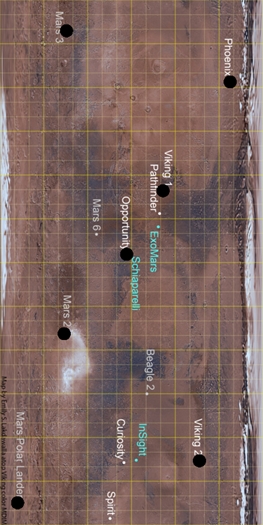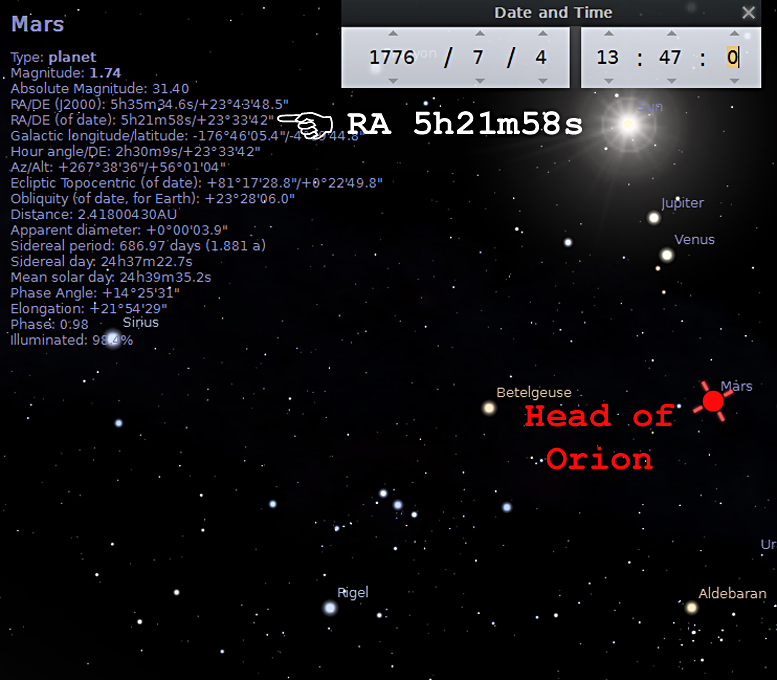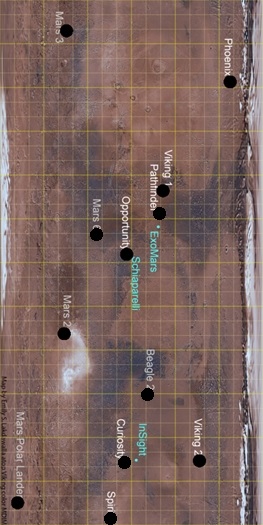It looks like you're using an Ad Blocker.
Please white-list or disable AboveTopSecret.com in your ad-blocking tool.
Thank you.
Some features of ATS will be disabled while you continue to use an ad-blocker.
6
share:
I'm always trying to find their hidden agenda, hidden in plain site.
This is what I found looking at that site map. I think the images say it all.


Mars heard of Orion July 4, 1776

The odd thing is the Mars head location is on my birth date. 5hr 21min 58sec or 5-21-58
This is what I found looking at that site map. I think the images say it all.


Mars heard of Orion July 4, 1776

The odd thing is the Mars head location is on my birth date. 5hr 21min 58sec or 5-21-58
a reply to: ManFromMars
Nope.
You'll have to clarify things somewhat.
I think the images say it all.
Nope.
You'll have to clarify things somewhat.
Was Orion a giraffe hybrid? Because his head (Mars) is really far from his shoulders.
The odd thing is the Mars head location is on my birth date
edit on 6/25/2018 by Phage because: (no reason given)
originally posted by: Phage
a reply to: ManFromMars
I think the images say it all.
Nope.
You'll have to clarify things somewhat.
Was Orion a giraffe hybrid? Because his head (Mars) is really far from his shoulders.
The odd thing is the Mars head location is on my birth date
Ok the site map mimics the Orion Constellation with it's landing sites. When a Planet or the Sun is above the shoulders of Orion it's considered his head. The elliptic doesn't let it get any closer.
a reply to: ManFromMars
Not very closely and it seems you've done quite a bit of cherry picking. Not to mention that Mars is round.
Ok the site map mimics the Orion Constellation with it's landing sites.
Not very closely and it seems you've done quite a bit of cherry picking. Not to mention that Mars is round.
Oh. I'm not a big fan of astrology. Never mind.
When a Planet or the Sun is above the shoulders of Orion it's considered his head.
edit on 6/26/2018 by Phage because: (no reason given)
a reply to: ManFromMars
No. Just no. The layout is completely wrong. The angle and spacing of the "belt" isn't even close. Most egregiously, you do NOT get to ignore the data-points that don't fit with your notion. Even keeping your arbitrary "west is up" orientation (like the landing sites, cherry-picked to force things to fit), your chart should look like this:

This thread is one for the Skunk Works.
No. Just no. The layout is completely wrong. The angle and spacing of the "belt" isn't even close. Most egregiously, you do NOT get to ignore the data-points that don't fit with your notion. Even keeping your arbitrary "west is up" orientation (like the landing sites, cherry-picked to force things to fit), your chart should look like this:

This thread is one for the Skunk Works.
Credit goes out to them who hit the spot on another Planet.
Job 38:31 “Can you bind the chains of the Pleiades? Can you loosen Orion’s belt?
Orion spacecraft
In the not-too-distant future, astronauts destined to be the first people to walk on Mars will leave Earth aboard an Orion spacecraft. Carried aloft by the tremendous power of a Space Launch System rocket, our explorers will begin their Journey to Mars from NASA's Kennedy Space Center in Florida, carrying the spirit of humanity with them to the Red Planet.
The first future human mission to Mars and those that follow will require the ingenuity and dedication of an entire generation. It's a journey worth the risks. We take the next step on that journey this Thursday, Dec. 4, with the uncrewed, first flight test of Orion. (Follow along on the Orion Blog, or see the full schedule of events and launch viewing opportunities).
Orion is the first spacecraft built for astronauts destined for deep space since the storied Apollo missions of the 1960s and 70s. It is designed to go farther than humans have ever traveled, well beyond the moon, pushing the boundaries of spaceflight to new heights.
Orion will open the space between Earth and Mars for exploration by astronauts. This proving ground will be invaluable for testing capabilities future human Mars missions will need. The area around our moon, in particular, called cis-lunar space, is a rich environment for testing human exploration needs, like advanced spacewalking suits, navigating using gravity, and protecting astronauts from radiation and extreme temperatures.
One of Orion's early missions in the 2020s will send astronauts to explore an asteroid, which will be placed in a stable orbit around the moon using a robotic spacecraft. This Asteroid Redirect Mission will test new technologies, like Solar Electric Propulsion, which will help us send heavy cargo to Mars in advance of human missions. Astronauts aboard Orion will return to Earth with samples of the asteroid, having tested a number of collection tools and techniques we'll use in future human missions to Mars or its moons.
Astronauts will board Orion for a first crewed flight in 2021. Many of Orion's systems needed for that flight and others will be tested on Thursday with the first uncrewed flight test.
Orion’s flight test is designed to test many of the riskiest elements of leaving Earth and returning home in the spacecraft. It will evaluate several key separations events, including the jettison of the launch abort system that will be capable of carrying astronauts on future missions to safety if a problem were to arise on the launch pad or during ascent to space, and the separation of the Orion crew module from its service module ahead of its reentry though Earth’s atmosphere.
Orion’s heat shield also will be tested to examine how the spacecraft endures its high speed return from deep space. The heat shield will experience temperatures near 4,000 degrees Fahrenheit during Thursday’s test, and will come back at about 80 percent of the speed the spacecraft would endure returning from the vicinity of the moon.
Other elements will also be put to the test, including how Orion’s computers handle the radiation environment in the Van Allen Belt, the spacecraft’s attitude control and guidance and how its 11 parachutes slow the crew module to just about 20 mph ahead of its splashdown in the Pacific Ocean.
Teams also will evaluate the procedures and tools used to recover Orion from the ocean after it touches down about 600 miles southwest of San Diego and is transported back to shore.
Testing these capabilities now will help ensure that Orion will be the next generation spacecraft for missions in the 2020s that will put Mars within the reach of astronauts in the 2030s.
As development continues on Orion, astronauts aboard the International Space Station are helping us learn how to protect the human body for longer durations, which missions to Mars will require. Researchers operating increasingly advanced rovers and spacecraft on and around Mars are revealing the planet's history while characterizing its environment to better prepare for human explorers. Here on Earth, the U.S. spaceflight industry is building and testing next generation technologies NASA will need to send astronauts to Mars and return them safely.
The Journey to Mars is humanity's Next Giant Leap into our solar system. The Orion spacecraft and its first flight test will help make it possible.
Job 38:31 “Can you bind the chains of the Pleiades? Can you loosen Orion’s belt?
Orion spacecraft
In the not-too-distant future, astronauts destined to be the first people to walk on Mars will leave Earth aboard an Orion spacecraft. Carried aloft by the tremendous power of a Space Launch System rocket, our explorers will begin their Journey to Mars from NASA's Kennedy Space Center in Florida, carrying the spirit of humanity with them to the Red Planet.
The first future human mission to Mars and those that follow will require the ingenuity and dedication of an entire generation. It's a journey worth the risks. We take the next step on that journey this Thursday, Dec. 4, with the uncrewed, first flight test of Orion. (Follow along on the Orion Blog, or see the full schedule of events and launch viewing opportunities).
Orion is the first spacecraft built for astronauts destined for deep space since the storied Apollo missions of the 1960s and 70s. It is designed to go farther than humans have ever traveled, well beyond the moon, pushing the boundaries of spaceflight to new heights.
Orion will open the space between Earth and Mars for exploration by astronauts. This proving ground will be invaluable for testing capabilities future human Mars missions will need. The area around our moon, in particular, called cis-lunar space, is a rich environment for testing human exploration needs, like advanced spacewalking suits, navigating using gravity, and protecting astronauts from radiation and extreme temperatures.
One of Orion's early missions in the 2020s will send astronauts to explore an asteroid, which will be placed in a stable orbit around the moon using a robotic spacecraft. This Asteroid Redirect Mission will test new technologies, like Solar Electric Propulsion, which will help us send heavy cargo to Mars in advance of human missions. Astronauts aboard Orion will return to Earth with samples of the asteroid, having tested a number of collection tools and techniques we'll use in future human missions to Mars or its moons.
Astronauts will board Orion for a first crewed flight in 2021. Many of Orion's systems needed for that flight and others will be tested on Thursday with the first uncrewed flight test.
Orion’s flight test is designed to test many of the riskiest elements of leaving Earth and returning home in the spacecraft. It will evaluate several key separations events, including the jettison of the launch abort system that will be capable of carrying astronauts on future missions to safety if a problem were to arise on the launch pad or during ascent to space, and the separation of the Orion crew module from its service module ahead of its reentry though Earth’s atmosphere.
Orion’s heat shield also will be tested to examine how the spacecraft endures its high speed return from deep space. The heat shield will experience temperatures near 4,000 degrees Fahrenheit during Thursday’s test, and will come back at about 80 percent of the speed the spacecraft would endure returning from the vicinity of the moon.
Other elements will also be put to the test, including how Orion’s computers handle the radiation environment in the Van Allen Belt, the spacecraft’s attitude control and guidance and how its 11 parachutes slow the crew module to just about 20 mph ahead of its splashdown in the Pacific Ocean.
Teams also will evaluate the procedures and tools used to recover Orion from the ocean after it touches down about 600 miles southwest of San Diego and is transported back to shore.
Testing these capabilities now will help ensure that Orion will be the next generation spacecraft for missions in the 2020s that will put Mars within the reach of astronauts in the 2030s.
As development continues on Orion, astronauts aboard the International Space Station are helping us learn how to protect the human body for longer durations, which missions to Mars will require. Researchers operating increasingly advanced rovers and spacecraft on and around Mars are revealing the planet's history while characterizing its environment to better prepare for human explorers. Here on Earth, the U.S. spaceflight industry is building and testing next generation technologies NASA will need to send astronauts to Mars and return them safely.
The Journey to Mars is humanity's Next Giant Leap into our solar system. The Orion spacecraft and its first flight test will help make it possible.
That's right, answer the debunking of your claims with a wall of text.
Was it copy&pasted from somewhere?
Was it copy&pasted from somewhere?
new topics
-
The Undertones - Teenage Kicks
Music: 5 minutes ago -
Volcano Watch 2025
Fragile Earth: 25 minutes ago -
Judge rules president-elect Donald Trump must be sentenced in 'hush money' trial
US Political Madness: 8 hours ago -
Farmers wife
Music: 10 hours ago -
NJ Drones tied to Tesla explosion at Trump Las vegas
General Conspiracies: 11 hours ago
top topics
-
Matthew Livelsberger said he was being followed by FBI
Political Conspiracies: 17 hours ago, 16 flags -
New Jersey-Teachers Can Now Be Certified Without Passing Basic Reading Writing Math Testing
Education and Media: 14 hours ago, 8 flags -
NJ Drones tied to Tesla explosion at Trump Las vegas
General Conspiracies: 11 hours ago, 6 flags -
Judge rules president-elect Donald Trump must be sentenced in 'hush money' trial
US Political Madness: 8 hours ago, 3 flags -
Farmers wife
Music: 10 hours ago, 2 flags -
Volcano Watch 2025
Fragile Earth: 25 minutes ago, 0 flags -
The Undertones - Teenage Kicks
Music: 5 minutes ago, 0 flags
active topics
-
Paranoid Liberals Believe U.S. Service Members are More Dangerous than Illegal Aliens.
Social Issues and Civil Unrest • 36 • : Lazy88 -
Petition Calling for General Election at 564,016 and rising Fast
Political Issues • 214 • : BedevereTheWise -
NJ Drones tied to Tesla explosion at Trump Las vegas
General Conspiracies • 10 • : Athetos -
The Undertones - Teenage Kicks
Music • 0 • : gortex -
Judge rules president-elect Donald Trump must be sentenced in 'hush money' trial
US Political Madness • 6 • : Athetos -
Tesla Cybertruck Explodes in Front of Trump Hotel in Las Vegas
Mainstream News • 208 • : tjack -
Volcano Watch 2025
Fragile Earth • 0 • : Coelacanth55 -
Here we again... CHINA having mass outbreak of something
Diseases and Pandemics • 22 • : AdultMaleHumanUK -
Simulation theory and have we reset before like a game?
Conspiracies in Religions • 45 • : G1111B1234 -
Matthew Livelsberger said he was being followed by FBI
Political Conspiracies • 64 • : CarlLaFong
6
